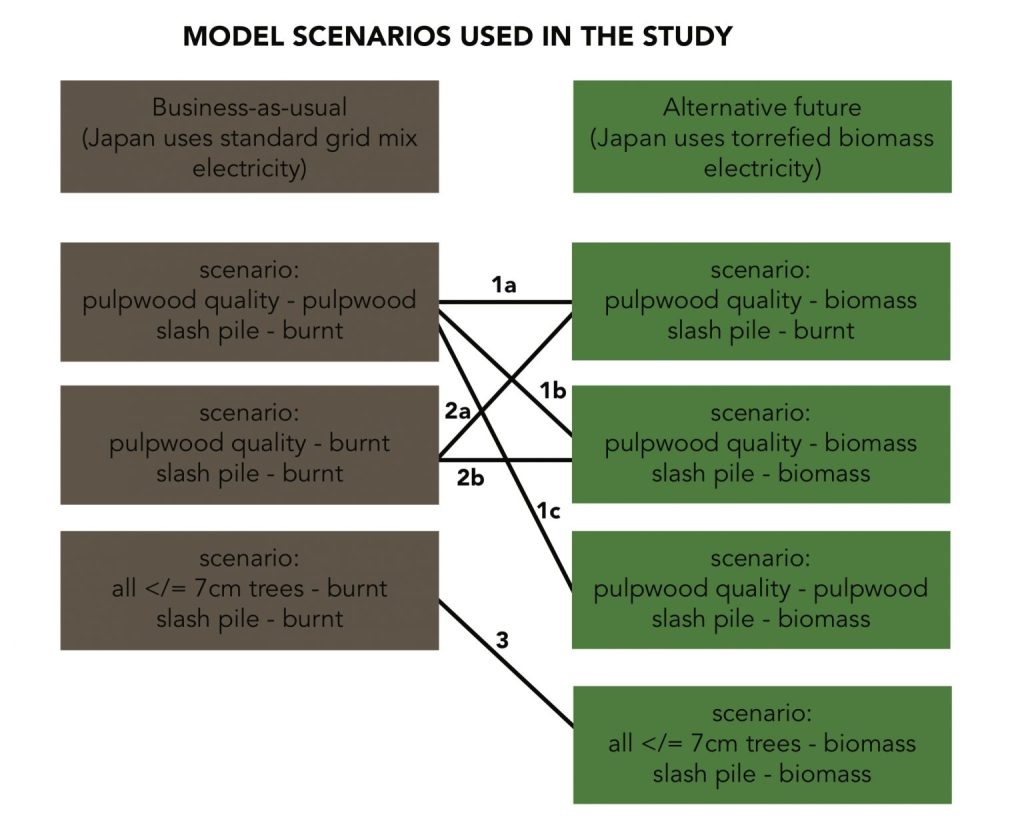Close
Close
Controversial filmmaker Michael Moore has been in the news again of late, this time for his newest documentary, Planet of the Humans. The film has been criticized widely for its selective handling of facts surrounding various forms of renewable energy, the overall central topic of the film. Critics of the film, which include many prominent environmentalists and environmental scientists, cite disjointed use of facts, antiquated data, and simplistic analyses of complex situations to vilify nearly every form of renewable energy currently in use.
One type of energy that is the focus of the latter quarter of the film is biomass energy. Moore and the narrator Jeff Gibbs chronicle a litany of complaints against biomass, from dangerous additives being combined with “green” wood chips to create toxic air pollution, to a dismissal of claims that biomass reduces net carbon emissions, to assertions that forests are being clear cut just to make wood pellets for foreign markets.
While Moore’s criticism of biomass energy may be extreme, it is also not new. Type “biomass energy” into Google, and one can see that over the past several years, there dozens of new posts about biomass energy weekly, even daily. Many of these articles are extolling the virtues of biomass, but a solid proportion also challenge what they see to be spurious claims about the carbon neutrality of large-scale biomass as an energy substitute, or they call out offenders who are cutting healthy trees instead of using wood waste.
Biomass experts tend to have positions right in the center of these two camps. Experts acknowledge that biomass is not as carbon neutral as it may at first seem, particularly if it leads to deforestation or if it uses wood that would be better used for other products. Most experts also converge on the opinion that while biomass should be part of the energy mix, but due to its limitations, it does not readily scale to the level needed to be the primary energy source for any nation or massive geographic area.

SIG has been involved in biomass assessments for years, and its scientists are some of the experts that the biomass field turns to when it needs a deeper understanding of carbon dynamics. Ever-timely, SIG scientists Thomas Buchholz, David Schmidt and their teams have just completed an investigation of biomass pellets. The study, done for Restoration Fuels LLC, completed a carbon life cycle analysis (CLCA) for biomass derived from fuel removal treatments done in the Malheur National Forest, Oregon, and shipped to Japan where they are used to generate electricity.
After decades of fire exclusion via fire suppression in forests across the United States, many forests, like the Malheur National Forest, now have abnormally high amounts of brush, small diameter trees, dead trees, and other woody debris (known as “slash”) that make forests vulnerable to high severity fires and alter a forest’s hydrological cycle, overall health, and wildlife habitat. Data from the US Forest Service (USFS) suggests that nearly a century of fire exclusion has led to an accumulation of small trees totaling at least 1.5 billion cubic feet annually, well exceeding densities recorded any historic inventory records.
Under normal fire conditions, these kindling materials would get cleaned out by small fires every few years – leaving the larger trees/ forest canopy largely unharmed. Under the current regime of fire exclusion, small diameter trees continue to grow to a dense understory with considerable volumes of dead trees, tilting the species distribution towards shade-tolerant trees, and therefore change evapotranspiration patterns, wildfire behavior, and wildlife habitat drastically.
The build-up of dead wood plays various roles in the ecosystem, both good and bad. On the positive side, any decaying plant material on the forest floor adds nutrients to the soil, and provides microhabitat for bacteria, insects and other microfauna. However, once too much woody debris builds up, it can alter water dynamics on and in the soil, and also lead exclusion of certain types of plants and animals, decreasing local biodiversity. For all of these reasons – fire management, hydrological dynamics, and habitat improvement – small-diameter tree density, species composition and woody debris on forests floors may need to be reduced, whether naturally by low-severity fires, or artificially by foresters.

The business model of Restoration Fuels LLC is to find ways to use this woody material productively, so that large, high-severity fires can be prevented and natural habitats restored, all while sustaining a climate-friendly business model. They do this by developing markets for and producing low-grade biomass from no-value to low value material such as small diameter logs, damaged, charred or diseased trees or pulpwood-grade material in the absence of viable pulpwood markets. The goal is to improve market conditions that can support forest restoration and fuel reduction projects in a manner that does not add to net greenhouse gas (GHG) emissions from forests.
The business model of Restoration Fuels LLC is to find ways to use this woody material productively, so that large, high-severity fires can be prevented and natural habitats restored, all while sustaining a climate-friendly business model. They do this by developing markets for and producing low-grade biomass from no-value to low value material such as small diameter logs, damaged, charred or diseased trees or pulpwood-grade material in the absence of viable pulpwood markets. The goal is to improve market conditions that can support forest restoration and fuel reduction projects in a manner that does not add to net greenhouse gas (GHG) emissions from forests.
Traditionally, one of a few things might otherwise happen to these small trees and slash. In one fuel removal scenario, the slash and small diameter wood would be collected and “pile burned” on site, meaning, wood debris would be piled up, dried out, and burned to ash which would be left on site. In another scenario, the small trees would be added to feedstock for pulpwood products that are used in long-term construction projects but the slash would still be burned on site. In another scenario, all slash and small diameter trees would be torrefied (which is a process that converts into a charcoal-like material for use in electricity generation). And, in a final scenario, only the slash would be torrefied, while the small trees would be turned into pulpwood.
The question is, which one of these scenarios preserves the most carbon, or emits the least carbon? To answer this question, SIG performed a carbon life cycle assessment by carefully specifying model parameters of the different options, and then account for carbon losses at every stage of the models. In this case, SIG and partner, the Pinchot Institute for Conservation, measured carbon lost during the process of removing the small diameter trees and slash, undergoing pile burning, pulpwood conversion or torrefaction, and then shipping the torrefied wood products to Japan for use in generating electricity. They then had to calculate time to carbon parity – the time until the carbon expelled through the fuel collection and electricity generation equaled the carbon expelled through generating equivalent energy with fossil fuels.
Part of the key to getting these calculations right is understanding market conditions. In the US, small diameter wood is generally harvested for long-lived pulpwood products that are used for construction, and therefore function as a long-term store of carbon. Slash is generally burned on site, which releases carbon immediately into the atmosphere, making it a huge and unwanted plus on the balance sheet when calculating carbon emissions. The middle ground – where slash and some of the small diameter wood that would otherwise be destined for construction materials is used for generating energy – does not yet have a market in the United States. Without a market for new products, even the best laid plans for green industries will fail. Conversely, without a market for durable products (building materials), the carbon calculations become more favorable for short-term products (torrefied wood) if the alternative it to simply burn the wood in piles in the forest.
The SIG team analyzed six different possible fuel mix and end product scenarios (see diagram below) using spatial data on fuel collection volumes and locales from the US Forest Service. Models were created which accounted for fuel collection volumes and locales, carbon sequestration of fuel given the habitat, cost of fuel removal and processing, impact of a torrefaction plant in the forest, rather than far way, carbon storage time and capacity of fuels if processed into different end products and feasibility of the end product given current local (and international markets).

First, model runs showed that if pulpwood quality woods were torrefied instead of being used for existing pulpwood markets (scenario 1a in the diagram above), it would likely require over 30 years of avoided fossil fuel use to reach carbon parity. Meaning, more simply, that such a scenario was far from carbon neutral, and not a climate-friendly choice. However, for every other scenario, carbon parity was 0 years, meaning carbon savings were immediate.
The scenario that generated the most carbon savings was the one where there were no markets for pulpwood products, and therefore all small trees and slash were torrefied for energy generation (scenario 2b). In this case, over 10 million metric tonnes of CO2E were saved over 40 years. The second most carbon-saving scenario was the one in which all slash, and only slash were used for making torrefied wood products, and all small diameter trees were used for pulpwood (scenario 1c). In this case, everything that could be a long-term carbon store was used as such, and everything that would otherwise be burned as waste on site was used to make a sustainable energy product, saving over 8 million metric tonnes of CO2E over 40 years. In no scenario did shipping the products to Japan have a negligible impact on carbon emissions.
Thomas Buchholz, primary study author, noted that “Producing bioenergy can go horribly wrong from a climate perspective, or can nearly instantly help restoring restore both the atmosphere and landscape…or it can do many things in between, as this study in just one locale shows.”
The results of the study need to be understood within the context of all the caveats that went into the models. For one, the models did not calculate the emissions that would be required to build a torrefaction facility, and they further assumed that having a facility on site would not further alter forest conservation and restoration efforts. Both of these things could have negative carbon impacts, and would need to be explored through additional models. Further, the study also assumed that the forest treatments would continue as they are now – i.e. designed to select for optimum tree size and location to increase total tree cover and biodiversity. If, however, forest treatments were altered so the main goal was reduced risk large-scale high severity wildfires, more carbon would be left in the landscape because mostly just small diameter trees would be cut. Preliminary models run under this second treatment scenario suggest almost 15 times more carbon emissions could be saved vs. the best performing cases analyzed in this study.
This brings us back to the recent backlash against Planet of the Humans. The film rightly points out that using biomass for electricity generation is not as carbon neutral as it may appear. However, as the critics of the film even more rightly note, making that calculation is nowhere near as simplistic as the film makes it seem. Where the biomass comes from, what it’s alternate uses are, what sorts of markets exist for those uses, and how and where the biomass is processed make a huge difference in the carbon savings of any biomass product. And, as SIG’s most recent study has shown, if the alternatives are burning unusable wood in a burn pile or turning it into a biomass that can generate large-scale electrification, then biomass is clearly the climate winner.